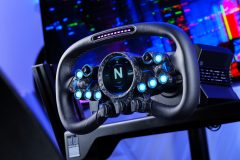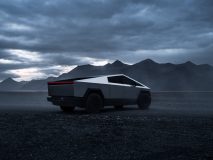The electric vehicle (EV) industry is undergoing a significant revolution, and Nissan, a pioneer in the space, is taking a major step forward by announcing its support for Tesla’s winning charging connector, the North American Charging Standard (NACS), for the North American market. This move not only positions Nissan as the first Japanese brand to adopt the NACS connector but also the first Asian automaker to do so. With this decision, Nissan joins other major automakers like Ford, GM, Volvo, and Mercedes-Benz in accepting Tesla’s charging standard.
Nissan has been at the forefront of the electric vehicle revolution since the early release of its Nissan Leaf in 2010. The company’s commitment to sustainable transportation has been evident through its development of EV technologies and infrastructure. Currently, Nissan utilizes two different port standards for its models: CHAdeMO on the Leaf and CCS1 on the Ariya.
In a press release, Jeremie Papin, Nissan Americas chairperson, expressed the company’s enthusiasm for providing thousands of additional fast chargers for Nissan EV drivers by adopting Tesla’s NACS connector. Nissan plans to start incorporating the NACS port into its vehicles from 2025 onwards. This decision not only expands the charging options for Nissan EV owners but also enables them to access Tesla’s extensive Supercharger network. To facilitate this transition, Nissan will provide a CCS-to-NACS adapter for current EV owners in the coming year.
The use of Tesla’s NACS connector is particularly significant for Nissan’s future models, including the upcoming Ariya. The adapter, however, will be limited to owners of Nissan’s latest EV models, as the older Leaf vehicles use the CHAdeMO plug standard that is gradually being phased out.
In addition to embracing Tesla’s charging revolution, Nissan has announced its intent to manufacture two new EV models at its plant in Canton, Mississippi, starting in late 2025. These upcoming vehicles are expected to incorporate the NACS connectors, aligning with the industry’s widespread adoption of this standard.
Tesla’s NACS connector has gained traction not only among automakers but also in public charging networks like Electrify America, EVgo, and ChargePoint. Its acceptance by the Society of Automotive Engineers (SAE) as a standard allows any company to utilize the NACS connector.
Nissan’s decision to adopt Tesla’s NACS connector marks a significant shift in the electric vehicle industry. By embracing a standardized charging connector, automakers can offer consumers greater convenience and flexibility when it comes to charging their EVs. This move also promotes interoperability among different EV models and contributes to the growth of a robust charging infrastructure.
The integration of Tesla’s NACS connector into Nissan’s vehicles brings several advantages for Nissan EV owners. Firstly, it provides access to thousands of additional fast chargers, expanding the charging network available to Nissan drivers. This increased accessibility enables longer trips and reduces range anxiety for Nissan EV users.
Secondly, Nissan’s support for Tesla’s charging standard allows current Nissan EV owners to utilize Tesla’s Supercharger network through a CCS-to-NACS adapter. This adapter ensures compatibility between different charging standards, enhancing the convenience of long-distance travel for Nissan EV owners.
Tesla’s Supercharger network is known for its extensive coverage and high-speed charging capabilities. By tapping into this network, Nissan EV owners can benefit from reliable and fast charging options, further enhancing the appeal and usability of Nissan electric vehicles.
The adoption of a standardized charging connector, such as Tesla’s NACS, by prominent automakers like Nissan signifies a positive shift towards a more unified and efficient electric vehicle charging infrastructure. As more manufacturers embrace this standard, EV owners can expect a broader range of charging options, increased interoperability, and a seamless charging experience.
In summary, Nissan’s support for Tesla’s NACS connector represents a significant milestone in the electric vehicle industry. By adopting a standardized charging standard, Nissan aims to provide its EV owners with increased convenience, greater access to charging infrastructure, and compatibility with Tesla’s Supercharger network. This move underscores Nissan’s commitment to sustainable transportation and its position as an industry leader in the electric vehicle space.
With the widespread acceptance of Tesla’s NACS connector by various automakers and charging networks, the future of electric vehicle charging looks promising. As the industry continues to evolve, standardization and interoperability will play a crucial role in enabling the widespread adoption of electric vehicles and driving the transition towards a sustainable and emission-free transportation landscape.
First reported on The Verge
Frequently Asked Questions
Q. How does Nissan’s adoption of Tesla’s NACS connector impact their future EV models?
Nissan’s adoption of Tesla’s NACS connector is particularly significant for their future EV models, including the upcoming Ariya. These new models will incorporate the NACS connector, aligning with the industry’s widespread acceptance of this charging standard. This move allows Nissan to offer their EV customers greater convenience and access to an extensive charging network, including Tesla’s Supercharger network. However, it’s important to note that older Nissan Leaf models, which use the CHAdeMO plug standard, will not be compatible with the NACS connector and will require a separate adapter.
Q. What advantages does Tesla’s NACS connector bring to Nissan EV owners?
Tesla’s NACS connector brings several advantages to Nissan EV owners. Firstly, it provides access to thousands of additional fast chargers, expanding the charging network available to Nissan drivers. This increased accessibility allows for longer trips and reduces range anxiety for Nissan EV users. Secondly, the support for Tesla’s charging standard enables current Nissan EV owners to access Tesla’s Supercharger network through a CCS-to-NACS adapter. This compatibility between different charging standards enhances the convenience of long-distance travel for Nissan EV owners. Tesla’s Supercharger network is renowned for its extensive coverage and high-speed charging capabilities, providing reliable and fast charging options for Nissan EVs.
Q. How does the adoption of Tesla’s NACS connector promote a more unified and efficient electric vehicle charging infrastructure?
The adoption of Tesla’s NACS connector by prominent automakers like Nissan represents a positive shift towards a more unified and efficient electric vehicle charging infrastructure. By embracing a standardized charging standard, automakers can offer consumers greater convenience and flexibility when it comes to charging their EVs. This move also promotes interoperability among different EV models and contributes to the growth of a robust and accessible charging infrastructure. As more manufacturers embrace the NACS connector and other standardized solutions, EV owners can expect a broader range of charging options, increased compatibility, and a seamless charging experience regardless of their vehicle brand.
Q. How does the acceptance of Tesla’s NACS connector by charging networks and organizations contribute to the future of electric vehicle charging?
The acceptance of Tesla’s NACS connector by charging networks like Electrify America, EVgo, and ChargePoint, as well as by organizations like the Society of Automotive Engineers (SAE), plays a crucial role in shaping the future of electric vehicle charging. By adopting a standardized charging standard, these networks and organizations facilitate interoperability and promote a more streamlined and efficient charging experience for EV owners. The widespread acceptance of the NACS connector encourages other automakers and stakeholders to adopt similar standards, leading to a more cohesive and accessible electric vehicle charging infrastructure. Ultimately, this drives the growth and adoption of electric vehicles and contributes to the transition towards a sustainable and emission-free transportation landscape.
Featured Image Credit: Unsplash


















